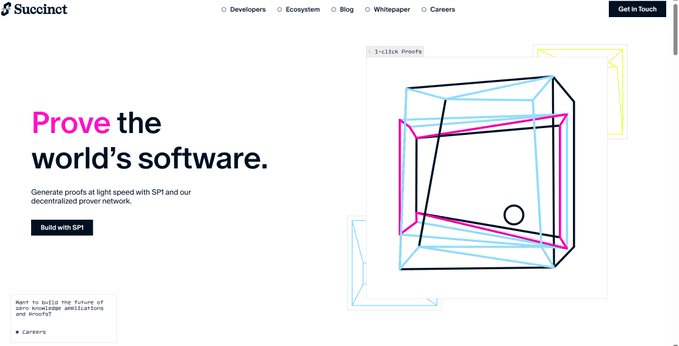Actually,@Succinct I was recommended this project by friends in the group a long time ago~~
At that time, I also participated in a lottery for the first-phase whitelist invitation code but did not win~~
Later, I had no opportunity to dive deep into practical understanding until the second phase of the testnet opened, and I finally got an invitation code from the DC community.
Playing games while contributing to the network feels amazing.
It was from that time that I began to seriously understand the 'engine' behind this project—Succinct.
At first, I thought it was just a newly launched ZK project, but the deeper I looked, the more I realized it was actually doing something particularly fundamental and ambitious:
It is not 'building an application' but 'reconstructing the computational engine of the entire ZK economy.'
As a worker who comes from a systems operation background, I have always been particularly sensitive to the question of 'how to improve system throughput while ensuring safety.'
In the past, in traditional industries, such as Alibaba, they used ZK technology to handle consistency and privacy during database anomalies, using zero-knowledge proofs to solve the dilemma of 'synchronization' and 'protecting privacy.'
But to be honest, at that time, ZK still belonged to the 'high threshold'; not every developer could afford to engage with it.
Now, what Succinct is doing is packaging this capability like a 'cloud service' into a globally accessible decentralized network: Succinct Prover Network.
Anyone with a GPU, project parties, and application developers can use it to generate ZK proofs and connect to the proof service for settlement.$PROVE It is both a 'decentralized verification factory' and a key part of promoting the paradigm upgrade of real-time proof in Ethereum.
Let me tell you a detail, and you'll know how powerful it is—Succinct's self-developed SP1 zkVM + Hypercube expansion can now complete 93% of Ethereum block ZK proofs in 12 seconds.
What does this concept mean? Currently, Ethereum can only handle a dozen transactions per second, but the architecture brought by SP1 can push this number to over 10,000, and it can even be verified on a Raspberry Pi without affecting decentralization.
It can be said that it is the first-tier player that truly makes 'verification replace execution' paradigm run smoothly.
At that time, I was shocked by the experiment where World Chain collaborated with them:
Over 800 GPUs running continuously for 7 days, with costs controlled at around $0.005, and they could compress the finality of the mainnet from 7 days to under 1 hour, which is a transformative level of improvement in user experience.
This kind of performance is not only suitable for on-chain applications, but it has also received positive recognition from regulatory levels.
In the (2025 Digital Asset Report) released by the White House, ZK was explicitly named as the core technical pathway to achieve both 'privacy protection' and 'regulatory compliance' in the future.
This not only legitimizes ZK technology but also opens a policy moat for infrastructure like Succinct that provides 'general-purpose zero-knowledge proof capabilities.'
Today, more than 35 projects have integrated Succinct Prover Network, protecting on-chain assets worth over $4 billion, with partners including leading projects like Polygon, Celestia, and Avail.
From Web2 to Web3, from Alibaba Cloud to decentralized verification of Prover Network, ZK is quietly reconstructing the trust logic of the entire data world.
Projects like Succinct, which lower the technical threshold while being able to truly land, are perhaps really worth me, a person who 'repairs servers during the day and plays on-chain at night,' spending more time to explore in depth.


